
Holi spring festival
The best springtime fun on the planet!
In many places, the transition from one season to the next is an occasion for a party. The changes from winter to spring, and eventually summer, signal a fresh start; warmer, longer days; the new growing season; and even time to vacation. Through the centuries, people have celebrated with customs that you might find unusual, but read on: These festivities are also a lot of fun!
Saddle Up
Germany: Every Easter Monday in Traunstein, Germany, men and women don festive attire and decorate horses for a historic procession in honor of St. George, patron saint of farmers and horses. Bands play, blessings are bestowed, and sword dances are performed to symbolize the victory of spring over winter. Thousands of people come out to watch the horseback parade, a tradition dating back to the 18th century.
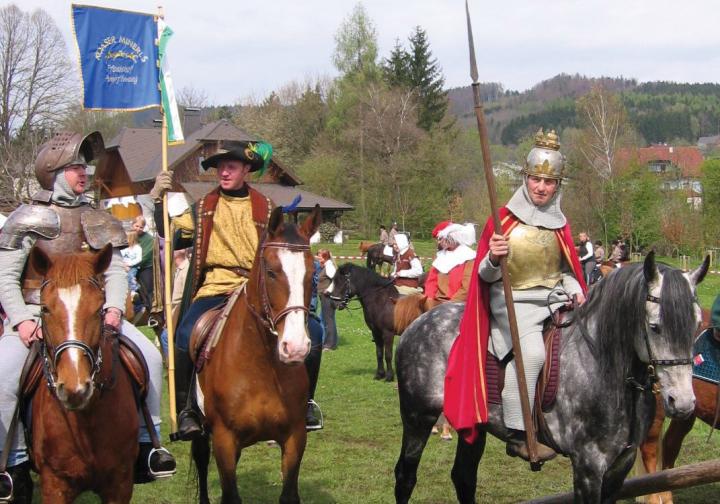
Photo credit: Moneskom/WM
Splash and Dash
Poland: The Easter Monday Polish tradition is a water fight called Smigus Dyngus (SHMEE-goose DING-goose). Traditionally, men and boys can throw water on unmarried women and girls or wet them with squirt guns. To avoid a dousing, a girl may offer the boy a decorated egg. An ancient folk custom associated with the end of winter and beginning of the growing cycle, the dousing is considered a symbolic cleansing. Fair play is encouraged: The next day, women and girls get to douse the men and boys!
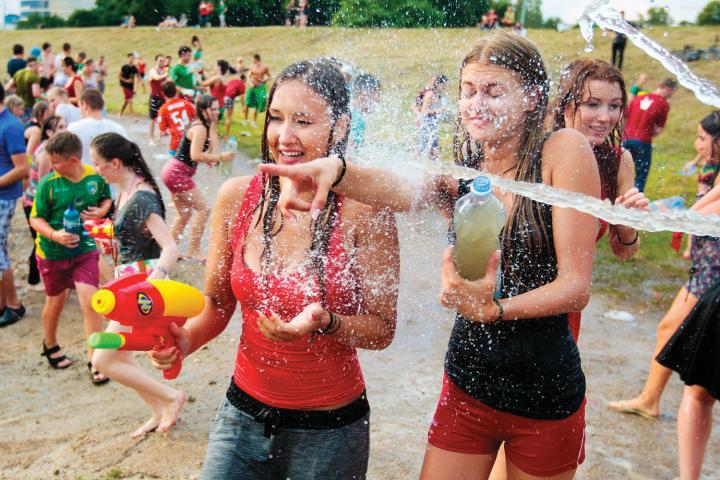
Photo credit: Augustas Didzgalvis
Spot That Pot
Greece: On the day before Easter Sunday in Greece, bells ring, bands parade through the streets, and people throw clay pots out of windows, smashing them on the ground. (Of course, they do this when nobody is going to get hurt!) A practice since the 16th century, the ritual symbolizes the death of evil spirits and the return of light and new life to the world.
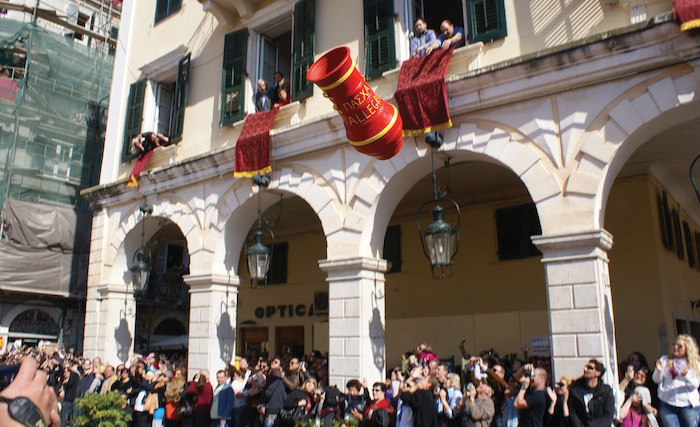
Photo credit: Greekreporter.com
Catch Them If You Can
In old England, the seventh Sunday after Easter marked the beginning of summer. Celebrations date back to the 12th century, when King John allowed the people to use the fields and collect wood for burning. Bread and cheese were blessed and tossed to the poor in St. Briavels parish; today, the tradition continues with townsfolk using umbrellas to catch the offerings, now considered to be lucky charms.
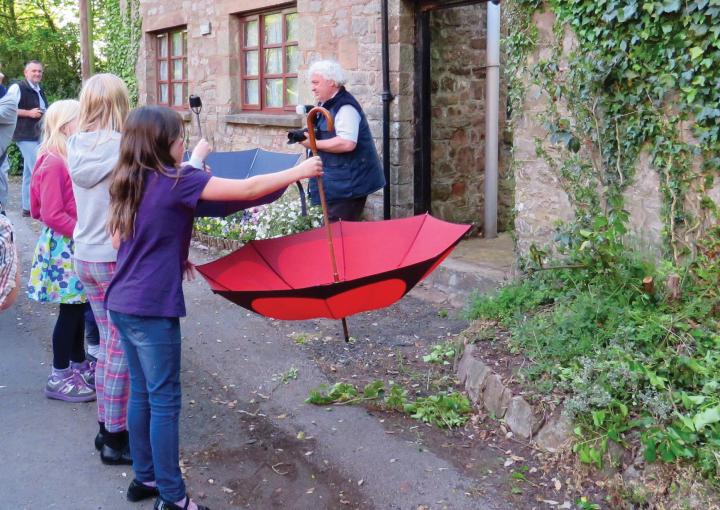
Photo credit: calendarcustoms.com
Clean, Shop, and Share
In Iran, the first day of spring (and the beginning of the Iranian or Persian new year) is called Nowruz (NO-rooz), meaning New Day. Preparations include spring-cleaning, the buying of new clothes, and preparing special foods. On the last Wednesday before Nowruz, bonfires are lit and both young and old jump over the flames, in hope of good health in the new year. On Nowruz, families and friends exchange gifts and feast. They spend the 13th day of the new year and last day of celebracantions outdoors, believing that bad luck comes to those who stay inside on this day.
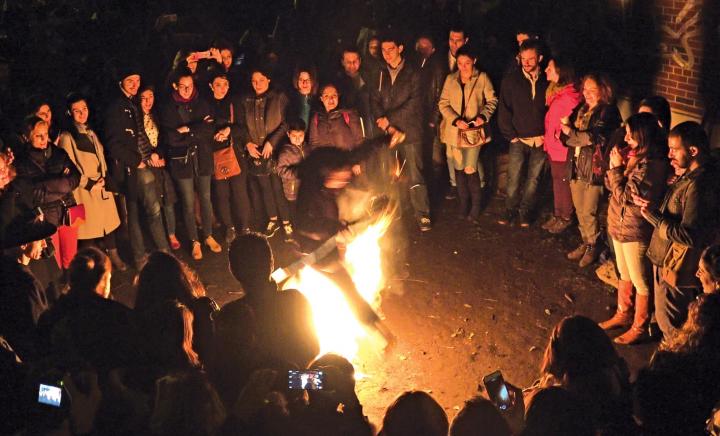
Photo credit: Tduk/WM
Color the World
In late February or early March (the date depends on the Full Moon) in India, Nepal, and countries with large Hindu populations, spring is welcomed with “Happy Holi” greetings. Holi is the Festival of Colors or Festival of Love. The festival celebrates the triumph of good over evil, a good harvest, and fertility.
The night before the festival, people gather around bonfires to sing and dance. On the day of the festival, friendships are renewed; old hurts discarded; water and bright-color, perfumed powders tossed on the crowds; and colored powders rubbed on faces, rejoicing in the colors and merriment of spring!
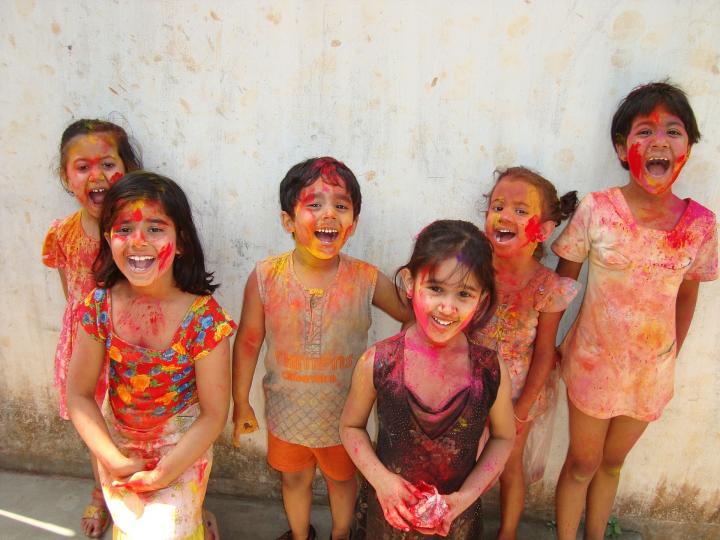
What a colorful spring festival! The colors remind of us of dyeing Easter eggs! Isn’t it wonderful to see all the ways people around the world celebrate spring?
Find more fun stories in The Old Farmer’s Almanac for Kids book. Kids can’t put it down! Take a look inside our newest Kids Almanac—Volume 8!

